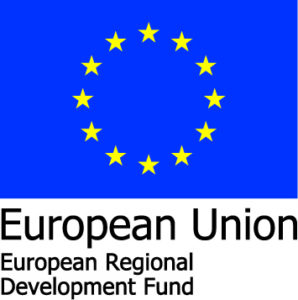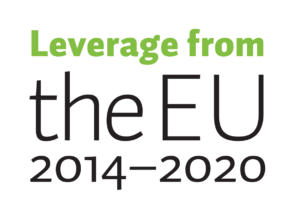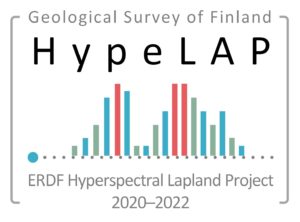Hyperspectral Lapland – A new project studying a technology to support mineral exploration
The two-year project studies how hyperspectral technology can benefit practical mineral exploration in Finland. New know-how gained from technology can, for example, enhance the quality and accuracy in drill core loggings.
The mineral exploration industry uses different geological data sources to find new mineral deposits. One of the most important and most expensive data sources is diamond drilling, which produces vast amounts of drill core, i.e. cylindrical bedrock samples from the subsurface. Information about the mineralogy of bedrock samples, and particularly drill cores, is one of the fundamental elements of any target-oriented exploration programme. Drill core logging is the systematic recording of this information from drilled bedrock samples.
Seeking Geological Building Blocks
Drilled bedrock samples are traditionally studied in such a way that first a geologist logs them (prepares a description) and then selected samples are assayed in a geochemical laboratory to determine the detailed element and mineral composition. Geochemical laboratory studies are accurate, but time consuming and expensive to execute. Thus, there is no point in analysing every piece of rock in a laboratory. This emphasises the importance of drill core logging as a research method.
Consistent core logging requires a significant level of skill, experience and careful observation from a geologist. Therefore, the risk involved in drill core logging may lead to a loss of quality or even to misinterpretations in the work carried out within exploration teams.
Evolving Technology
Hyperspectral imaging is a method to identify different materials or define their properties. It is based on the use of certain parts of the electromagnetic spectrum. In theory, materials and compounds can be identified from their unique spectral signatures, which are a result of how differently they react to radiation.
During the last decade, hyperspectral imaging units, including large drill core scanners and handheld devices, have been developed to operate on a commercial level. This instrumentation operates in visible (VIS), near-infrared (NIR), short-wave infrared (SWIR) and long-wave infrared (LWIR) subranges of the electromagnetic spectrum. The latest technical developments are in the mid-wave infrared (MWIR) range.
In geological research, the described technology could be applied, for example, to produce consistent and measurable mineralogical information from drill cores, providing a useful tool for enhancing man-made core loggings. At its best, it could mean the recognition of almost a full suite of common minerals relevant to exploration work by means of hyperspectral imaging. This would help to reveal the origin of the rocks, delivering a basis to understand the different geological units, including those associated with ore deposits. In short, hyperspectral data may aid geological experts in their challenging core logging task in a significant way.
New Research Project
In June 2020, a two-year project called Hyperspectral Lapland (HypeLAP) was launched. The project is financed through the European Regional Development Fund (ERDF) by a decision from Business Finland. A total of ten companies, from small and medium-sized enterprises to large international mining organisations, have agreed to support the project by participating in steering group work.
The Hyperspectral Lapland Project aims to provide practical solutions to mineral exploration by taking full advantage of the state-of-the-art hyperspectral imaging and handheld instrumentation. The project aims to especially benefit mining and exploration companies targeting their activities to Northern Finland. In addition, the opportunity to build a new consultancy service based on hyperspectral imaging will be reviewed.
The project will be carried out by the Geological Survey of Finland (GTK). The results of the project will be made publicly available to the mineral exploration industry and to geoscientists.
Additional information
Accountable Project Leader Vesa Nykänen, Geological Survey of Finland, vesa.nykanen@gtk.fi
Project Manager Markku Korhonen, Geological Survey of Finland, markku.korhonen@gtk.fi
Website: projects.gtk.fi/hypelap/



